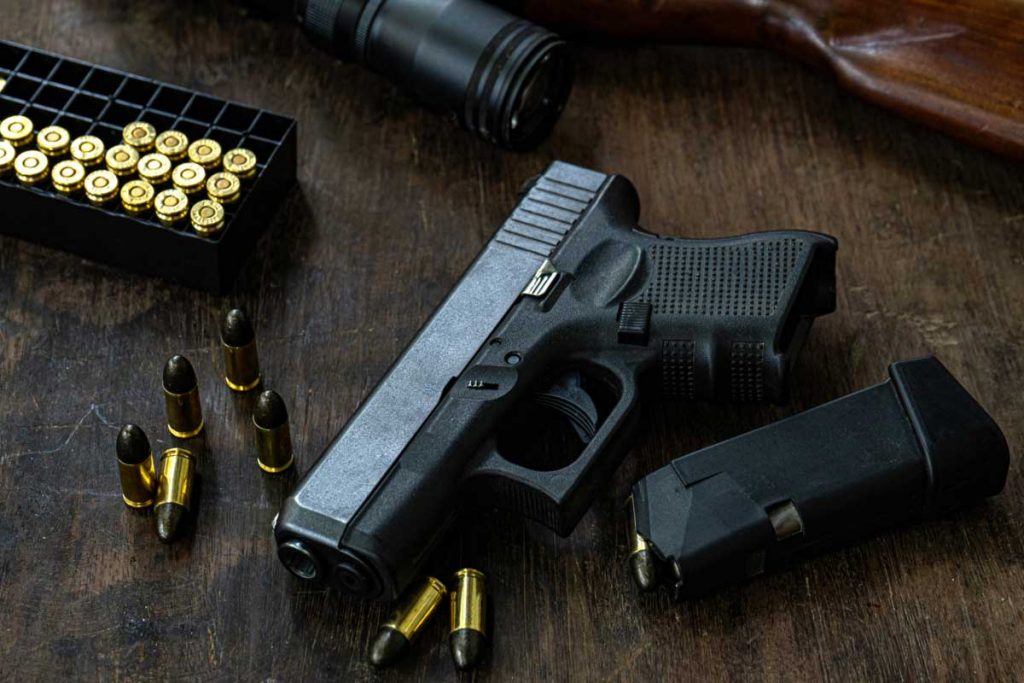Introduction
Semi-automatic handguns have an infinite number of options and configurations. Here we’ll cover key points about barrel size, frame size and materials. Note these are generalizations; each rule of thumb below has many exceptions, and it would be far beyond the scope of this short article to expound upon them. But broadly speaking…
Barrels
Longer barrels are a key factor in increased accuracy. Rifles are more accurate than pistols. A longer rifle barrel will help make a gun more accurate than the same rifle with a shorter barrel.
The longer the barrel, generally the harder it is to conceal a gun. So there aren’t any concealed carry rifles, for instance, but there are plenty of concealed carry handguns.
Semi-automatics have many possible barrel lengths such as 2.5”, 2.75”, 3.0”, 3.5”, 4.0”, 4.25”, 5.0”, 6.0” and so on. All else being equal, the longer barrel will be more accurate while the smaller the barrel, the easier it is to conceal.
Barrels are mostly rifled. These are grooves cut into the barrel’s bore (interior) that spiral parallel to one another inside the tube. When a gun is fired, exhaust gases propel the bullet. Some of the gases vent forward through the grooves which spins bullets while propelling them from behind. The gyroscopic spinning stabilizes bullets the same way passing a football does. Rifling thus make guns more accurate.
Different calibers have different rifling ratios known as a twist rate. The ratios are expressed with a 1 to X number, such as 1 to 10” (written alternatively as 1:10” or just 1:10, etc.). This means that the grooves make a full 360-degree rotation every 10” along the length of the barrel. A 1 to 10” barrel 20” long would have two full 360 rotations. Bullets don’t need to do full rotations within a barrel. The smaller the ratio, the faster the bullet spins. Thus a 1:10” ratio barrel will spin a bullet faster than a 1:16” ratio barrel.
Barrels often have crowned muzzle or even have a recessed crown. This is to protect the exit point at the muzzle. That’s the launch point of the bullet, and any imperfections to the rifling, etc., there can throw off accuracy. Thus the crown helps protect the end of the muzzle for this reason.
You’re going to see many guns feature cold hammer forged barrels. While this might create visions of a big muscular guy hammering at a barrel over an anvil, cold hammer forging actually involves taking the barrel stock and feeding it into a machine where it is hammered at mechanically all around. This process condenses the metal and squeezes out bubbles thus increasing barrel tensile strength.
High-end barrels often have fluted exteriors. This means they have long channels cut along their lengths. Fluted barrels are like fluted columns on buildings. Fluting goes back to architecture and engineering. The ancient Greeks found that fluting their temple columns meant they could keep the outer diameter of a column where bigger generally meant more stability and strength. But carving flutings into the columns reduced weight and enhanced portability. Thus, it is with the fluted barrels: they are lighter, but strong. The increased surface area fluting creates is also great for heat dissipation since heat builds up as guns are fired. And finally, fluted barrels simply look fantastic. However, fluting adds to the cost of a barrel.
Frames
The frame holds the gun together and, with components outside and inside, it functions as both an exoskeleton and a regular one. The barrel, slide, trigger assembly, grips, magazines, safeties, etc., attach to it.
Longer frames generally permit longer barrels and longer slides. Taller frames mean having taller grips. This generally permit increasing capacity since they can take taller magazines.
Frames are classified by size, such as full, compact, subcompact, micro-compact, etc. Generally, the bigger the gun (e.g. full size), the bigger the frame and the longer the barrel and the longer the distance between the front and rear sights. These last two factors provide increased accuracy. A bigger frame means a longer grip, which allows carrying more ammunition and more surface for the hand to hold the grip, which adds control and stability to manage recoil and muzzle flip. On the other hand, bigger guns are harder to conceal and weigh more. The smaller the gun (e.g. micro-compact), the less ammunition, the lower the accuracy, etc., but perhaps the more likely you will be to carry it around or have it handy for self-defense.
There are two broad groups of semi-automatic pistols: single-stack M1911 and double-stack polymer frame types made by Glock, CZ, etc. [There are also many other groups that combine characteristics of both…]
Colt 1911 .38 Super Semi Auto Pistol UPC 98289041746
Colt 1911 Semi Auto Pistol
Glock G17 Gen 3 9mm Luger Black Frame
Glock G17 Polymer Frame Semi Auto Pistol
There are no official size standards, so this can be a bit arbitrary, but a key benchmark for all things semi-automatic is the classic Colt Model 1911 (aka the M1911 or 1911) that was accepted by the US Army in 1911 and has remained a point of reference for pretty much every semi-automatic that’s followed since.
The M1911 remains incredibly popular. Seemingly every arms manufacturer makes one or more. These semi-autos come in several size frames. These include the full-size “Government” with 5” long barrels and a full-size 7+1 capacity frame, the compact “Commander” with 4.25” barrels with the same full-size 7+1 frame, the CCO with a 4.25” barrel, but a shorter and lower 6+1 capacity frame, the subcompact “Officer” with 3.5” barrel and shorter and lower capacity 6+1 frame. There is the 5+1 capacity micro-compact Defender that uses 3.0” barrels.
Shop 1911 Semi Auto PistolsMore
In contrast with the M1911 types of guns, we also have polymer frame guns whose designs started several decades ago. They’re very popular because they are generally lighter and often much higher in capacity. Moreover, thanks to striker-fired architecture instead of the hammer-fired architecture of M1911 and other guns, they can be more snag-free.
The reason many modern semi-auto designs have higher capacity is their frames often have wider grips to permit wider magazines, called double-stack magazines. Early double-stack guns like the CZ-75 started out with steel frames, but now polymer frames are prevalent among double-stack guns.
Shop Polymer Frame Semi Auto PistolsMore
Regardless of whether they are steel frame or polymer frame, their wider grips are to permit high-capacity double-stack magazines. These magazines store their ammo in two columns (“stacks”) versus the single-stack approach of guns like the M1911. Within the same height magazine, they’ll have roughly double the capacity than a single-stack magazine gun like the M1911. However, the tradeoff is wider grips can make a gun less concealable and might not be a good fit for smaller hands.
Materials
Semi-automatics are largely built using steel or stainless steel, various types of aluminum/steel alloys and polymer synthetics.
Semi-automatics were first built using steel. Now many guns have synthetic frames that are made of tough but lightweight polymers. Some high-end stocks are fiberglass reinforced. Making fiberglass reinforced stocks is generally manually intensive, which is what makes them so expensive.
Regarding handguns, models such as the M1911 started out using heavy and durable steel frames, barrels and slides.
Using stainless steel makes the gun corrosion resistant, but other guns have corrosion resistant finishes applied. The reason some guns use stainless steel (or satin finishes) is primarily for aesthetics.
These have also now been progressively modernized to use lighter but other extremely strong materials.
Conclusion
Semi-automatics vary in the length of their barrels, the frame materials, frame sizes and more. There is no one combination that is perfect across every possible situation, but each combination fits nicely into some niche.

